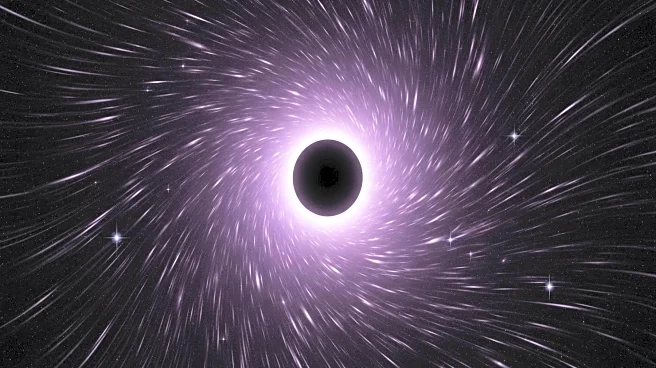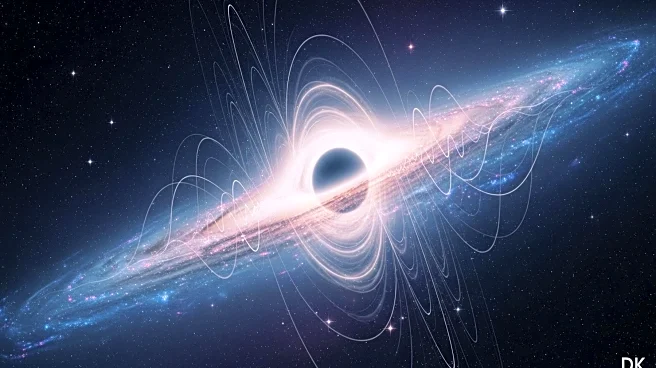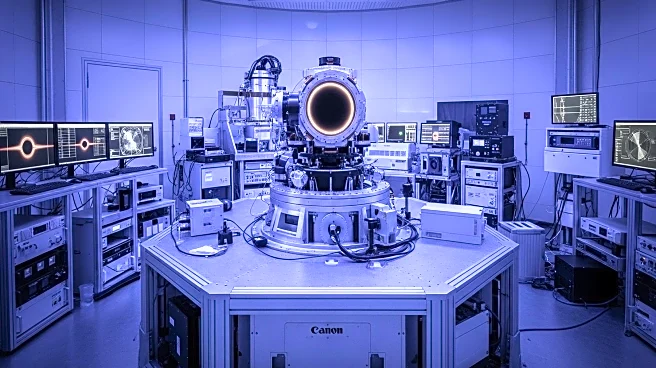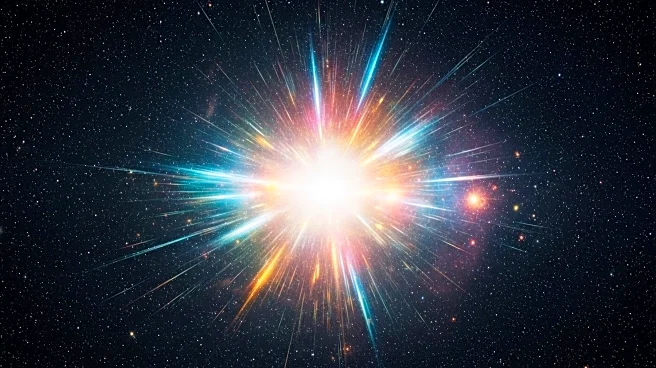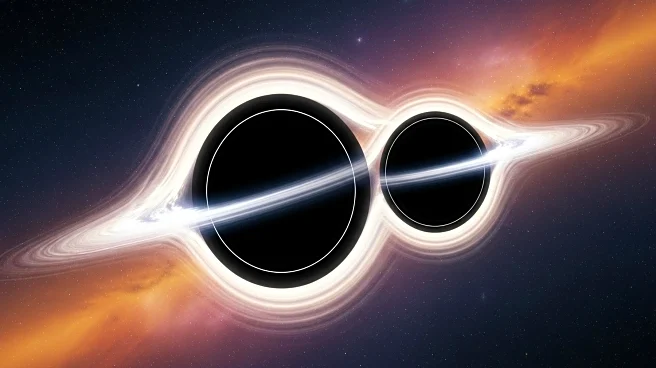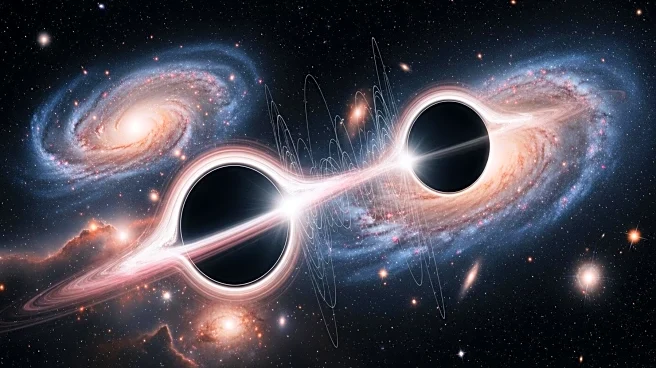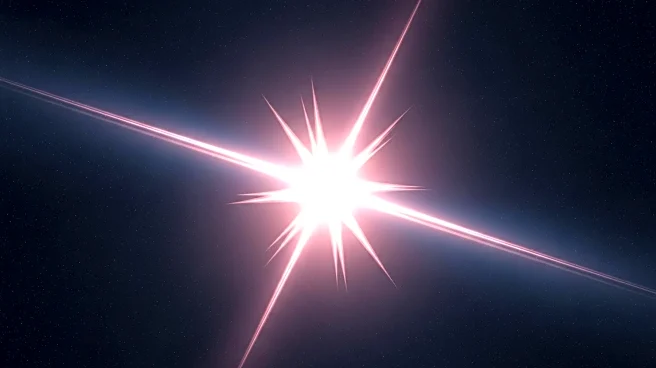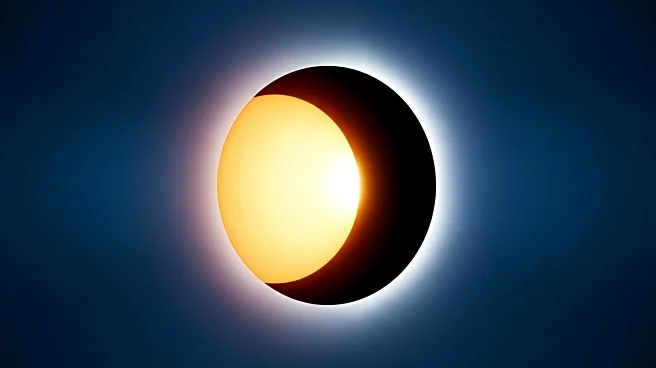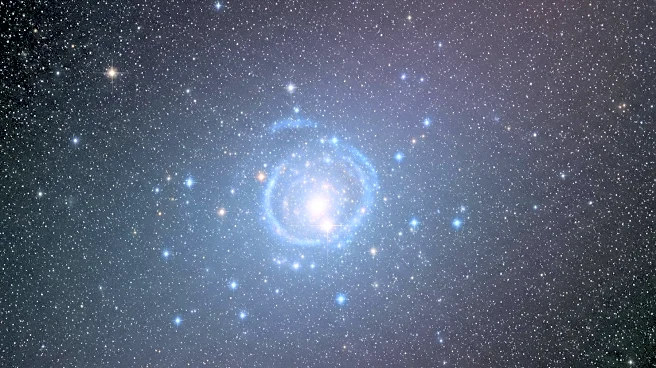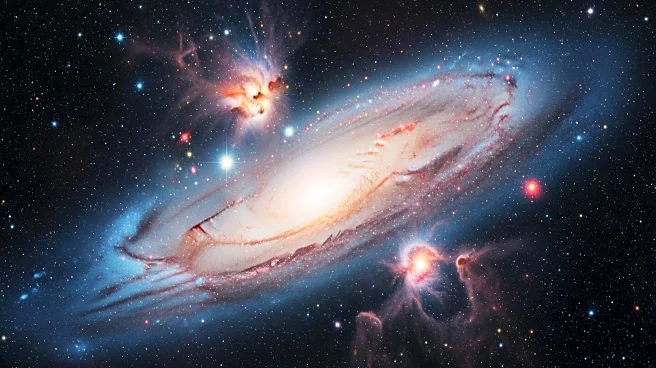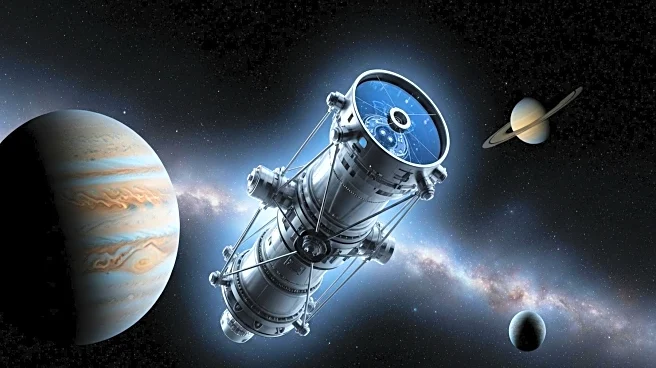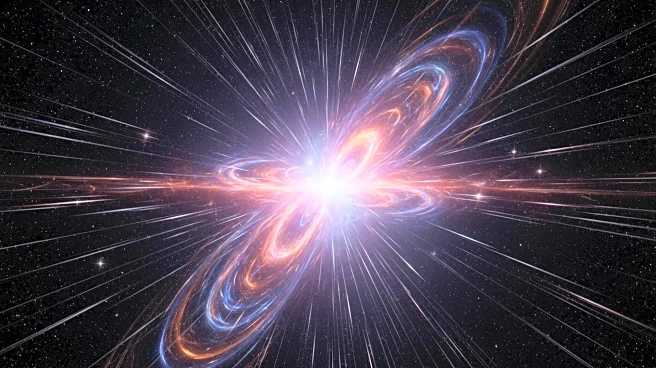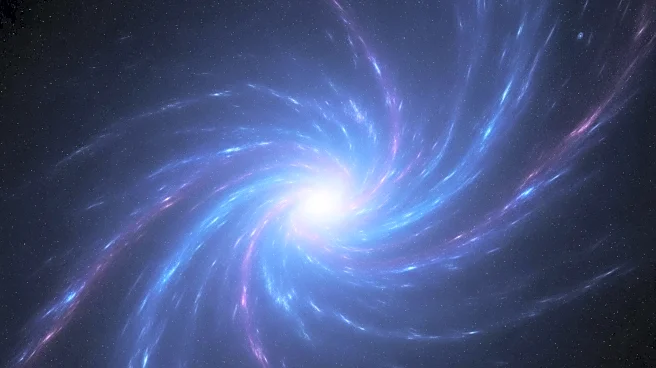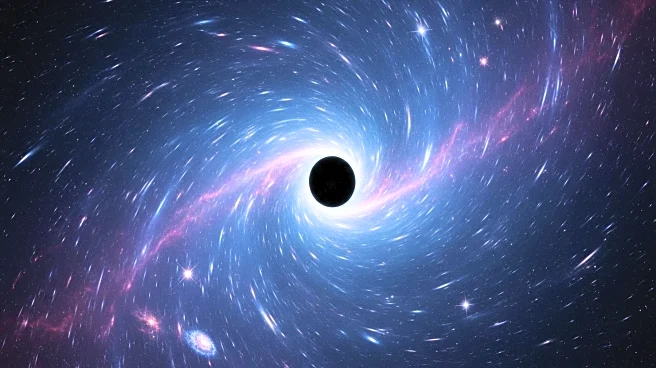What is the story about?
What's Happening?
Astronomers have successfully measured the speed and direction of a newborn black hole, using gravitational waves produced during its formation from a merger of parent black holes. This marks the first complete measurement of black hole recoil, a phenomenon where the newly formed black hole is propelled away from its birth site. The measurement was made possible by the Laser Interferometer Gravitational-Wave Observatory (LIGO) and its collaborators, Virgo and KAGRA. The recoil causes the black hole to emit gravitational waves in a preferred direction, allowing scientists to determine its speed and trajectory. This discovery provides a deeper understanding of black hole mergers and the dynamics involved in these cosmic events.
Why It's Important?
The ability to measure the recoil of a newborn black hole offers significant insights into the physics of black hole mergers and the behavior of gravitational waves. This knowledge enhances our understanding of the universe's most extreme events and the forces at play during black hole formation. The findings could lead to advancements in gravitational wave astronomy and improve our ability to detect and analyze these signals. Additionally, understanding black hole recoil can help distinguish between gravitational wave signals and electromagnetic signals, aiding in the study of dense environments like active galactic nuclei.
What's Next?
Researchers plan to use the recoil measurements to further investigate black hole mergers through both gravitational waves and electromagnetic radiation. This dual approach could provide a more comprehensive understanding of these events and their implications for astrophysics. Future studies may focus on identifying more black hole mergers and analyzing their recoil properties to refine existing models and theories.
AI Generated Content
Do you find this article useful?
